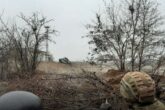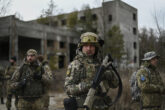February 05, 2018
How the United States Can Get More Strategic Bang For Its Force Structure Buck
Secretary of Defense Jim Mattis released an unclassified summary of the new National Defense Strategy two weeks ago. The big news in the strategy is a front-and-center focus on strategic competition with China and Russia. Though this change is evolutionary, not revolutionary, it provides badly needed clarity amidst the chaos that has been a hallmark of the Trump administration to date. Particularly notable is the strategy’s unambiguous direction to “build a more lethal joint force” in part by “prioritizing preparedness for war.”
A return to strategic competition against China and Russia, who both have the technology and the resources to challenge the U.S. military’s ability to operate freely in their respective regions, requires the Pentagon to think differently about the way it uses the military — or what’s known as force employment. To compete effectively against China and Russia while maintaining commitments in the Middle East, the Defense Department will need to figure out how to maximize the strategic impact of the size and capability of the force it has now — dubbed “force structure” in Pentagonese — by developing a new force employment model. In other words, it needs to figure out how to get more strategic “bang” out of its force structure “buck.”
Civilian and military leaders have been talking about the need for a more dynamic global presence for some years now, recognizing the fact that America’s post-Cold War force employment is generally static. The military tends to repeat the same deployments and exercises in the same places in the same ways year after year, without much consideration of how these events affect high-end competitors’ decision-making. This pattern of force employment cannot continue if the military is to execute the National Defense Strategy. The primacy of competition against China and Russia in the strategy requires that the United States change its approach to force employment in at least three ways.
Read the full article in War on the Rocks.
More from CNAS
-
Defense / Transatlantic Security
When Defense Becomes Destruction: Austria-Hungary’s Mistake and Ukraine’s RiskThis article was originally posted on War on the Rocks. The southeastern Polish city of Przemyśl, with its elegant 19th century Habsburg-era train station, remains one of the ...
By Franz-Stefan Gady
-
Defense / Transatlantic Security
Ukraine’s Catch-22 MomentThis article was originally published in the Financial Times. In Joseph Heller’s wartime classic, Catch-22, the protagonist Yossarian seeks out the US army surgeon Doc Daneeka...
By Franz-Stefan Gady
-
CNAS Insights | Budgetary Own Goals Undermine “Speed and Volume”
On November 7, Secretary of Defense Pete Hegseth laid out a plan to overhaul the Department of Defense’s (DOD’s) acquisition system. Placing an emphasis on delivering new capa...
By Philip Sheers, Carlton Haelig & Stacie Pettyjohn
-
Drones: Who Is Making the New Weapons of War?
From Ukraine and Russia to Gaza and Sudan, drones have become a key weapon of war. Which companies are making them, and profiting from this rapidly expanding but controversial...
By Stacie Pettyjohn




